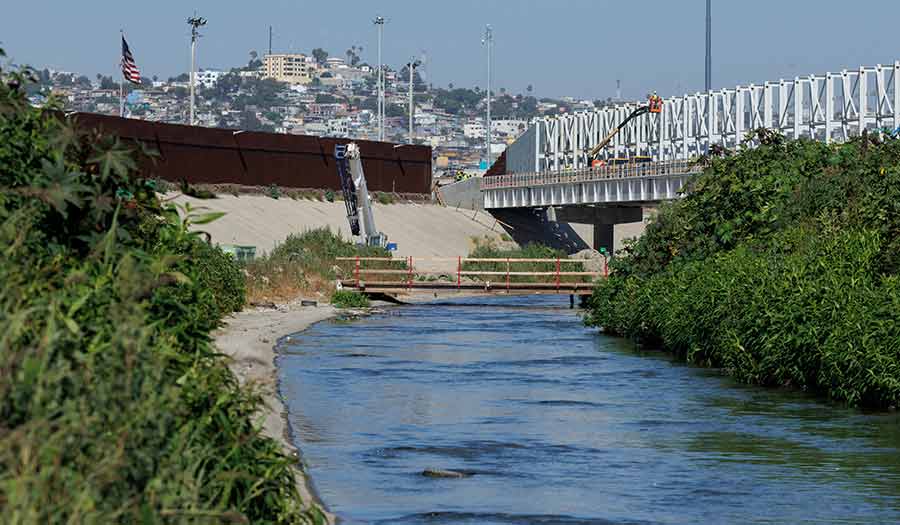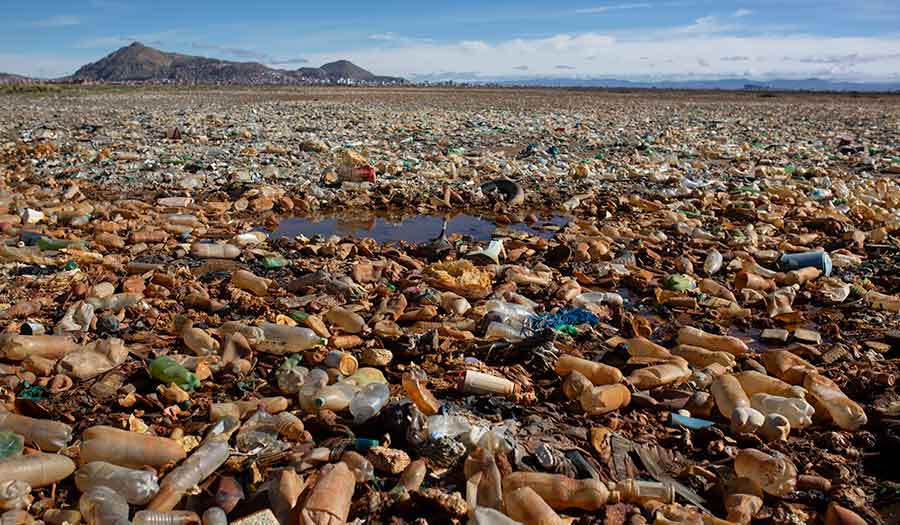 REUTERS/Mike Bake
REUTERS/Mike Bake
World News Desk
Learn the why behind the headlines.
Subscribe to the Real Truth for FREE news and analysis.
Subscribe NowIMPERIAL BEACH, California/TIJUANA, Mexico (Reuters) – Each day, millions of gallons of sewage cascade through a canyon and into the Pacific Ocean just south of the U.S.-Mexican border. As any surfer in San Diego knows, summer swells that come from the south will push the toxic brew north.
Meanwhile, millions more gallons of treated and untreated sewage trickle down the Tijuana River and into the sea just north of the border.
When the wind and currents conspire, the odor of fecal bacteria fouls the otherwise quaint San Diego County town of Imperial Beach, where Mayor Paloma Aguirre calls the discharges “the biggest environmental and public health disaster in the nation that nobody knows of.”
Were it the result of a hurricane or wildfire, rather than decades of neglect, the crisis might warrant a declaration of emergency, freeing recovery funds to address environmental damage, the threat to public health, and loss of tourism.
Instead, beachlovers and politicians are agonizing over the protracted efforts to upgrade infrastructure on both sides of the border.
The International Wastewater Treatment Plant, an overworked and underfunded plant built on the U.S. side of the frontier to treat Mexican sewage, has buckled under an increased volume that has been piped across the border the past two years, but plant managers say it should return to normal operations in August.
The Mexican state of Baja California says the most crucial repairs to Tijuana’s battered sewage infrastructure will be completed soon after, potentially ending the worst of the spills. It plans to invest $530 million on sewage infrastructure from 2023 to 2027.
“We are not just polluting U.S. waters but those of Mexico as well,” said Kurt Honold, a former mayor of Tijuana and now Baja California’s secretary of economy and innovation. “Our kids want to swim on the beaches of Tijuana and Rosarito without getting sick.”
Immediately north of the U.S.-Mexican border wall that descends into the sea, San Diego County health officials have effectively closed the beach for more than three years straight.
Further north near the Imperial Beach pier, bright yellow signs warning “Keep out of Water” have been posted on and off since 2021, depriving surfers of waves and Imperial Beach of crucial summer tourism revenue.
Strained Infrastructure
The international plant belongs to the International Boundary and Water Commission, a body governed by U.S.-Mexican treaty agreements.
When functioning properly, it treats 25 million gallons a day (1,095 liters per second).
But the plant has worn down under strain caused by Tijuana infrastructure breakdowns in 2022 and Tropical Storm Hilary a year ago, said Morgan Rogers, area operations manager for the IBWC’s San Diego field office. Sewage treatment is down to 22.7 million gallons per day this year.
“Every gallon we treat here is a gallon that doesn’t go into the ocean, whether it’s in the river or down south in Tijuana,” Mr. Rogers said.
Mr. Rogers led Reuters on a recent tour, when only one of the plant’s five primary tanks—each open air with nearly the capacity of an Olympic swimming pool—was working properly. As he spoke, a large bubble gurgled to the surface.
“Ugh, you can see some flow going through here,” Mr. Rogers said. “But we’re making some good progress.”
In addition to the $30 million upgrade, the plant is about to undergo a $400 million expansion with federal funds to double capacity, Mr. Rogers said, but it will need another $200 million to complete the job.
Tijuana Struggles
About 6 miles south of the border, a tunnel beneath the coastal highway releases wastewater with the fury of a dam that has opened its spillway.
It is outflow from San Antonio de los Buenos, Tijuana’s broken-down sewage treatment plant.
Mexico says a new $33.3 million plant under construction is scheduled to come online by September 30.
For now, just how much is pouring into the ocean remains in dispute. The IBWC estimates the flow at 35 million to 45 million gallons per day of raw sewage.
Baja California says the plant is discharging 23 million gallons per day (1,000 liters per second) of sewage that is minimally treated with chlorine. Mexico’s National Water Commission puts the figure at 27 million gallons per day (1,200 liters per second).
In addition, roughly 50 million gallons per day of sewage-contaminated water flows from the Tijuana River toward Imperial Beach, according to an IBWC river gauge.
Around half is raw sewage with the remainder a mix of treated sewage, groundwater and potable water from Tijuana’s leaky pipes, Mr. Rogers estimated.
Mr. Honold said Tijuana’s state-run infrastructure has suffered from decades of neglect as the city’s population soared from 65,000 in 1950 to some 2 million today.
Then Baja California’s Governor Marina del Pilar Avila, elected in 2021, made sewage repairs a priority, Mr. Honold said.
“We’re sorry,” Mr. Honold said. “We’re going to fix it, and we are fixing it.”
- Real Truth Magazine Articles
- WEATHER & ENVIRONMENT
 Water Crisis: What Happens When There’s Nothing Left to Drink?
Water Crisis: What Happens When There’s Nothing Left to Drink?
More on Related Topics:
- Nearly 250 Million Children Missed School Last Year Because of Extreme Weather, UNICEF Says
- What to Know About the Devastation from the Los Angeles-area Fires
- Los Angeles Wildfires Rage Out of Control, Testing Firefighting Resources
- A Quarter of Freshwater Animals Are Threatened with Extinction, New Research Shows
- After 20 Years, Indonesia’s Post-Tsunami Generation Stays Vigilant for Future Disasters


